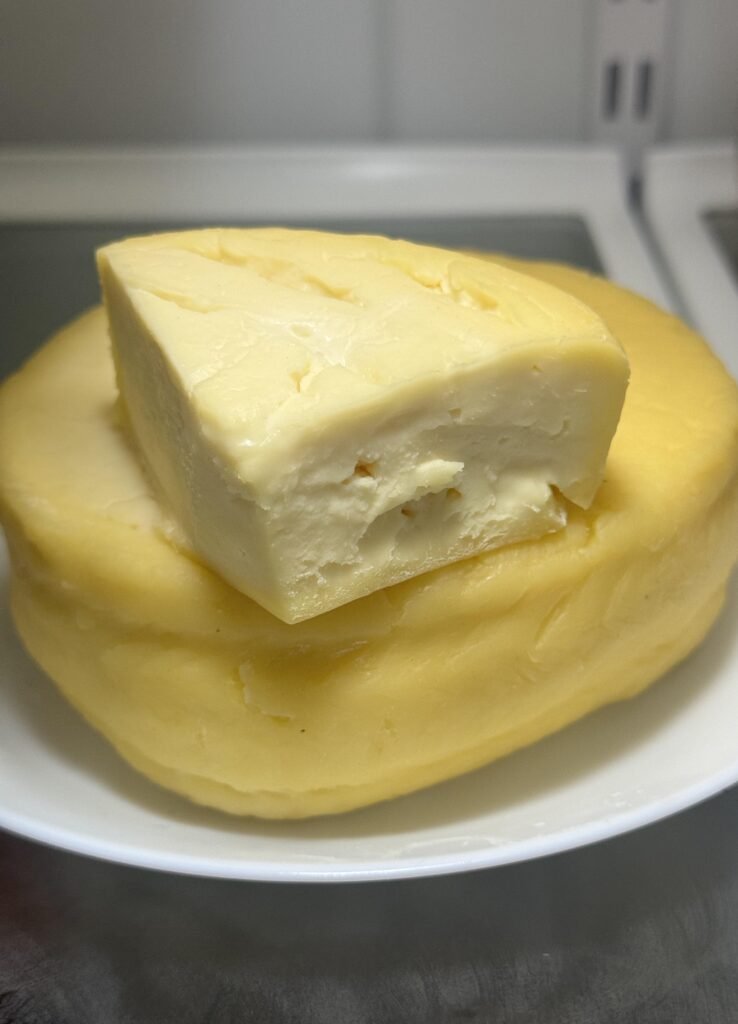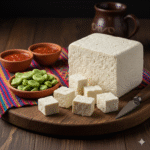What Is Queso Criollo?
Queso Criollo is one of Bolivia’s most iconic cheeses—a fresh, soft, mildly salty cheese enjoyed across the valleys and lowlands. Unlike aged European cheeses, Queso Criollo is meant to be eaten young, often within a few days of production. Its gentle flavor and adaptable texture make it a staple in Bolivian kitchens, appearing in everything from breakfast plates to baked snacks like cuñapé.
For travelers, cooks, and cheese enthusiasts curious about Bolivian cheese, Queso Criollo offers an authentic taste of local food culture.
Origin and Cultural Significance
Queso Criollo has its roots in rural dairy traditions. Made primarily from cow’s milk, it reflects Bolivia’s agricultural lifestyle, especially in regions like Santa Cruz, Cochabamba, and the valleys where cattle farming thrives.
Farmers prepare queso criollo boliviano early in the morning, pressing the fresh cheese by hand and lightly salting it to help preserve its softness. The result is a cheese that feels homegrown, nourishing, and deeply connected to Bolivia’s culinary identity.
How Queso Criollo Is Made
The process of making criollo cheese is simple and almost entirely artisanal:
-
Fresh cow’s milk is gently heated.
-
Natural or commercial rennet is added to create curds.
-
The curds are drained and pressed lightly, keeping some moisture.
-
A touch of salt is added for flavor and preservation.
-
The cheese is shaped into rounds or blocks and consumed fresh.
The minimal processing keeps the cheese soft, moist, and naturally flavorful—qualities that define queso criollo Bolivia.
Flavor Profile: What Does Queso Criollo Taste Like?
Queso Criollo is popular because it strikes the perfect balance between mild flavor and satisfying texture.
Tasting Notes
-
Texture: Soft, slightly springy, moist
-
Flavor: Mild, milky, lightly salty
-
Aroma: Fresh, clean, dairy-rich
-
Mouthfeel: Smooth, tender, melts easily
Its simplicity is its strength. The cheese does not overpower other ingredients, making it versatile and easy to pair with almost any dish.
How Bolivians Use Queso Criollo
If you want to experience authentic queso boliviano, try it in the dishes locals enjoy daily. Some of the most traditional uses include:
1. Cuñapé
A beloved Santa Cruz specialty, cuñapé is a chewy cheese bread made from cassava starch and Queso Criollo. The cheese gives it its signature soft center and golden exterior.
2. Empanadas de Queso
The cheese melts beautifully inside flaky empanada dough, creating a warm, comforting snack.
3. Breakfast Plates
Served with bread, fried eggs, or plantains, fresh Queso Criollo is a common morning treat.
4. Soups and Stews
In dishes like locro, small cubes of criollo cheese add creaminess without making the dish heavy.
5. Simple Snacks
Locals often enjoy it just as it is—sliced, sprinkled with a little salt, or paired with fruit.
Queso Criollo vs. Other Bolivian Cheeses
Bolivia has a rich cheese culture, but Queso Criollo stands out for its freshness. While aged varieties like Queso Chaqueño are firmer and saltier, Criollo is softer and milder. If you search for queso Bolivia or queso boliviano, Queso Criollo will almost always appear among the top traditional cheeses.

Substitutes for Queso Criollo
If you’re outside Bolivia and looking for a cheese similar to criollo queso, these options provide a close match:
-
Queso fresco
-
Farmer’s cheese
-
Mild feta (low-salt)
-
Paneer (softer varieties)
-
Soft ricotta salata
These alternatives mimic the soft texture and gentle flavor profile of Queso Criollo.
Why Queso Criollo Is Worth Discovering
Whether you’re learning qué es queso criollo, trying Bolivian recipes, or exploring new cheeses from around the world, Queso Criollo is a delightful introduction to Bolivia’s food culture. Its mild taste, versatility, and authenticity make it a cheese that appeals to everyone—from home cooks to culinary explorers.
This humble yet distinctive cheese continues to be a cornerstone of Bolivian cuisine, bringing comfort, tradition, and flavor to every meal it touches.


